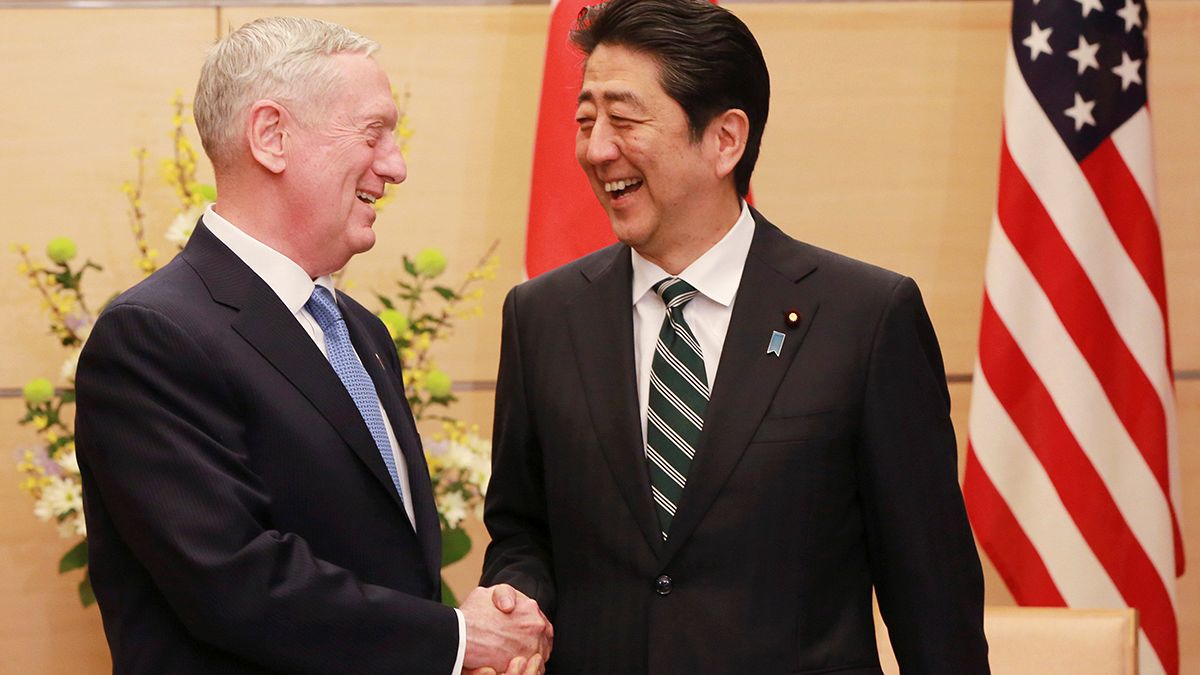The new US Defence Secretary has warned North Korea there will be an "effective and overwhelming" response if it chooses to use a nuclear weapon. Speaking at the start of a two-day visit to South Kore
South Korea’s Defence Minister says the US Defence Secretary’s visit to Seoul – his first trip abroad as defence secretary – sends a clear message of strong US support.
“Faced with a current severe security situation, Secretary Mattis’ visit to Korea…also communicates the strongest warning to North Korea,” Han Min-koo told reporters in Seoul.
The new US Defence Secretary has warned North Korea there will be an “effective and overwhelming” response if it chooses to use a nuclear weapon.
Speaking at the start of a two-day visit to South Korea, Jim Mattis is hoping to reassure Seoul of backup from Washington.
What did he say?
“Any attack on the United States, or our allies, will be defeated, and any use of nuclear weapons would be met with a response that would be effective and overwhelming,” Jim Mattis said at South Korea’s defence ministry.
“North Korea continues to launch missiles, develop its nuclear weapons programme and engage in threatening rhetoric and behaviour.”
Why is he saying this?
There are concerns that North Korea could be gearing up to test a new ballistic missile.
This has happened before, hasn’t it?
Yes.
However, it would be an early challenge for the new Trump administration.
North Korea carried out more than 20 missile tests last year, as well as two nuclear tests, in defiance of UN resolutions and sanctions.
Pyongyang also appears to have restarted operation of a reactor at its main Yongbyon nuclear facility.
The US think tank 38 North says this produces plutonium that can be used for its nuclear weapons programme.
Bolstered defences
Pyongyang’s behaviour has prompted the US and South Korea to respond by bolstering defences.
This includes the expected deployment of a US missile defence system, known as “Terminal High Altitude Area Defense” (THAAD) in South Korea later this year.
The two sides re-confirmed that commitment on Friday.
China, however, has objected to THAAD.
Beijing says it will destabilise the regional security balance.
There have been calls from the South Korean opposition to delay or cancel it.
South Korean citizens protest against #THAAD during US Defence Secretary James Mattis’ visit in Seoul, demand immediate withdrawal pic.twitter.com/PIZWWDBZWm
— CGTN (@CGTNOfficial) February 3, 2017
The North Korean nuclear threat
Once fully developed, a North Korean ICBM could threaten the continental US, which is around 9,000 km from North Korea.
ICBMs have a minimum range of around 5,500 km.
However, some are designed to travel up to 10,000 km or more.
What options does the US have?
Former US officials and other experts say the US essentially has two options when it comes to trying to curb North Korea’s fast-expanding nuclear and missile programmes: negotiate or take military action.
Neither path offers guaranteed success.
The military option if fraught with danger, especially for Japan and South Korea.
Both are US allies in close proximity to North Korea.
